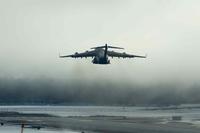Two of my favorite military analysts, Stephen Biddle and T.X. Hammes, discussed future warfare at a recent gathering of defense intellectuals and policymakers sponsored by the Foreign Policy Research Institute. They addressed the issue of “balance;” that is, how much of the Pentagon’s investment resources should be devoted to fighting current wars versus preparing for future contingencies. As SecDef Robert Gates said recently, “balance” should be the start point for re-crafting American strategy that sets priorities and considers tradeoffs.
Gates is heading in the right direction with a return to threat-based planning versus the capabilities-based portfolio planning of his predecessor that produced unaffordable procurement plans, Hammes said at the Washington gathering. Trying to guess the exact type or nature of future war the U.S. is likely to fight is the wrong way to go as more often than not you’re going to end up with the wrong force. Instead, develop a force that can fight well enough across the spectrum of conflict to buy time to work your way up the learning curve. No matter what type of war, you’ll be forced into a game of adaptation, as that is war's true nature, and the outcome usually comes down to who can adapt the fastest.
The challenge is preventing the services from defaulting to planning for another Cold War by substituting China for the Soviet Union. Setting aside for a moment the absurdity of going to war with your de-facto banker, Hammes said there is the little discussed issue of China’s nuclear arsenal. A U.S. air and naval campaign against China would target the country’s command and control. How do you do that without threatening their nukes and national command authority? The Chinese lack a reliable second strike capability, attacks on their command and control could be perceived as an effort to take out their nuclear capability, possibly triggering a "use-it or lose-it scenario." The Chinese know they can’t stop individual aircraft attacking the mainland, instead, they’re building ballistic missiles to target airstrips and carriers to force the U.S. to fight at the extreme limits of range, taking short range fighters out of the equation. As for the Russians: in Georgia, "the Russians drove a single division 60 miles after three months preparation." Not a threat.
As far as getting the balance right in the force for low intensity conflict, Hammes said the biggest shortfall is military advisors. Even with the experience of having to train the Iraqi and now the Afghan military, the services are not serious about creating an advisory capacity, they don’t devote sufficient resources to advisors or make changes to the promotion track to support it. The most highly trained advisors in the U.S. military, the Army’s Special Forces teams, are off clearing rooms and going after high value targets, a mission most any well trained platoon could do, instead of being coupled with Afghan Army battalions.
Hammes warned about an overdependence on the information grid, as it will be targeted by enemies and is vulnerable, so troops must learn to fight without it. The Marines are probably the most balanced force, Hammes, the former Marine said. When it comes to training for future wars, the ground forces must stay focused on configuring to win the fights they’re in, but also prepare for “hybrid wars.” There will be some specialization, tank crews, for example, will spend more time training for high intensity war than light infantry that will spend more time training for counterinsurgency. The Air Force and Navy are still buying too many weapons designed to fight the Soviets. Stand-off range and unmanned systems should be the order of the day for the Air Force. Developing a brown water navy while maintaining a strong submarine force should be the Navy’s priorities.
Stephen Biddle also sees a future of hybrid wars, although he views hybrid war as more of a historical progression of warfighting norms, rather than a novel form of fighting. In recent decades, state militaries have moved more towards traditional guerrilla modes of fighting, such as dispersion, seeking cover and concealment, which means that as non-state guerrilla forces, such as Hezbollah, adopt more state like ways of fighting, they don’t have as far to go.
Lethality in hybrid warfare is certainly increasing, as the vulnerability of even the most heavily armored vehicles will attest. Biddle questions the notion that situational awareness will prove adequate: “In a hybrid form of warfare, the ubiquity of cover and concealment makes it possible for reasonably skilled opponents to stay out of our information grid. If we can’t find them then we can’t include them in a networked form of situational awareness.” Instead of adding armor to vehicles or looking to information superiority to provide a battlefield edge, the U.S. will be forced to adopt more hybrid war like tactics: dispersion, cover and concealment, combined arms, fire and maneuver.
The “great divide” between the low intensity conflict crowd who say wars along Iraq and Afghanistan lines will be the future and those who say we need to prepare to fight China, seems rather out of place, Biddle said. Historically, wartime theater and grand strategy address a specific enemy, the one you're fighting, Much current debate assumes the real defense challenge is the next war. “Building a military that’s balanced across the demands of an actual war that we’re fighting right now and a future war against opponents who we can’t yet identify is an unusual response to a wartime planning problem.”
Biddle says both sides are wrong. Future wars, looking out past Iraq and Afghanistan, will likely be more differentiated than the low intensity crowd says, featuring a mix of asymmetric or irregular fighting, along with more high end engagement along traditional warfare lines. The focus should, however, be on winning the war we’re fighting now, as the costs of failure are real and quite high.
The military may ultimately be forced to undertake two transformations. If winning today means transforming for low intensity conflict, with larger ground forces and less emphasis on high-tech modernization, and then transforming once again, after these wars are concluded, for a different kind of war, then that’s probably the right path to take, as inconvenient and expensive as that may prove.







